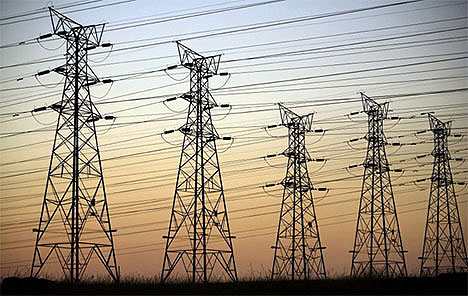The Energy Independence and Security Act (EISA) of 2007 assigned the National Institute of Standards and Technology (NIST) primary responsibility to coordinate the development of a framework that includes protocols and model standards for information management to achieve interoperability of smart grid devices and systems. The effort is part of a three-phase NIST Smart Grid program that also includes establishing an ongoing public-private partnership and developing a certification and accreditation process for the technology.

Electricity outages cost US industry approximately $50 billion per year, according to the Electrical Power Research Institute.
To accomplish this goal, NIST recently selected the Electric Power Research Institute (EPRI) to develop a smart grid interoperability roadmap, which will provide a framework for modernizing the nation’s transmission and distribution system.
EPRI’s development of an interim roadmap will be a step toward harmonizing interoperability standards for the Smart Grid. Interoperability means different vendors’ products will work together effectively, and consensus standards are expected to drive down the cost of components and systems, reduce the risk of early obsolescence, and spur innovation.
The project is scheduled for completion by early summer 2009. The interim roadmap will inventory existing standards, identify gaps, and list priorities for reconciling differences among current standards or developing entirely new ones.
Under the terms of the $1.3 million contract, EPRI has consensus support of the utility industry, independent system operators, manufacturers, standard development organizations, state regulators, and consumer representatives.
Development and wide-scale adoption of consensus standards will aid nationwide deployment of a more resilient, reliable, and responsive Smart Grid.
Research indicates that a national Smart Grid system could generate several benefits including:
• Enable active consumer participation
• Anticipate and respond to system disturbances
• Create more resiliency against disasters, both man-made and natural
• Improve asset use and operational efficiency
• Create new products, services, and markets
• Provide higher quality power for digital appliances and devices
Moreover, harmonization and a Smart Grip will likely help some private firms that are doing this already. For instance, Cisco Systems, Inc. recently announced its roadmap for linking consumers of electric power with its producers. The company’s smart grid hopes to help utilities lower the cost of energy storage, transmission, and distribution, reduce network outages, and improve the security of the nation’s power grid. Cisco’s plan includes a secure IP-based communications network to help utility companies optimize power supply and demand from data centers and substations, through neighborhood-area networks, to businesses, and homes. Components will include Cisco switches and routers and IP-based backhaul communications for smart meters.
Recently, the company and the city of Miami in partnership with GE and Florida Power & Light announced plans to deploy one million advanced wireless smart meters to every home and most businesses in Dade County, Florida. The meters will connect to high-efficiency transformers, digitized substations, and other equipment through a centralized information and control system.
Electric Power Research Institute
www.epri.com
National Institute of Standards and Technology
www.nist.gov
Cisco Systems, Inc.
www.cisco.com
::Design World::
Filed Under: Green engineering • renewable energy • sustainability, Energy management + harvesting





Tell Us What You Think!